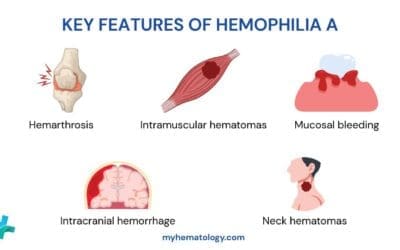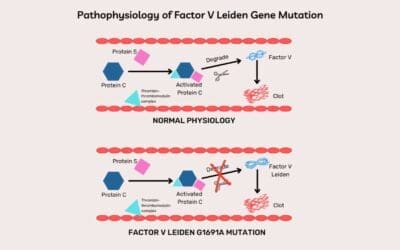Introduction
The activated partial thromboplastin time (APTT) is a coagulation test that measures the intrinsic pathway of blood clotting. While the APTT itself is a valuable diagnostic tool, it can be further enhanced through the use of manual mixing studies. Mixing studies are carried out when there is an isolated prolongation of APTT. These studies help differentiate between factor deficiencies and the presence of inhibitors towards coagulation factors, providing crucial information for the diagnosis and management of bleeding disorders.
Principle of Mixing Studies
Manual mixing studies involve mixing the patient’s plasma with different reagents and observing the resulting APTT. The specific reagents used depend on the suspected cause of the prolonged APTT. Here are some common approaches:
- 1:1 Mixing with normal plasma: This mixes the patient’s plasma 1:1 with normal plasma. If the APTT corrects to the normal range, it suggests a factor deficiency. If the APTT remains prolonged, it indicates the presence of an inhibitor.
- Mixing with specific factor concentrates: This involves mixing the patient’s plasma with individual factor concentrates to identify the specific factor deficiency.
- Mixing with phospholipid reagents: This helps assess the function of phospholipids, which are essential for the intrinsic pathway.
Materials
- #Platelet poor plasma (PPP) of patient. PPP is prepared by centrifuging the peripheral blood at 2000 g for 15 minutes at room temperature.
- Commercially available normal plasma pool
- *Activator-phospholipid solution
- *0.025 mol/L calcium chloride (CaCl2)
- *Glass tubes 5 ml
- *Water bath
- Ice bath or crushed-ice
- Stopwatch
- Timer
- Pipettes 100 – 200 ul
- Pipette tips
*These items must be at 37°C.
#PPP must be kept at room temperature to prevent activation of factor VIII which may cause an inaccurate timing result.
Protocol
Tube Preparation
- Label four tubes:
- Tube 1: Normal plasma (NP)
- Tube 2: Patient plasma (PP)
- Tube 3: Mixed plasma (MP)
- Tube 4: Incubated mixed plasma (IMP)*
- Dispense:
- Tube 1: 0.5 mL NP
- Tube 2: 0.5 mL PP
- Tube 3: 0.25 mL NP + 0.25 mL PP
- Tube 4: 0.25 mL NP + 0.25 mL PP
APTT Measurement
- Perform APTT in duplicate for tubes 1, 2, and 3 following a normal APTT protocol.
- Add 1 mL of activator-phospholipid solution into each test tube and immediately start the timer.
- Incubate the tubes in the water bath for 3 minutes with occasional gentle agitation.
- Get the stopwatch ready, add 0.5 mL CaCl2 and immediately start the stopwatch.
- Gently mix the solution in the test tubes by tilting the test tubes to 45° angle and agitate lightly.
- Intermittently take the tubes out of the water bath to observe for the first sign of clot formation.
- Stop the timer and record the time at the first sign of clot formation.
- Incubation: Incubate tube 4 at 37°C for 120 minutes.
- Cooling: After incubation, transfer tube 4 to an ice bath or crushed ice.
- Final APTT: Perform APTT on the incubated mixed plasma (tube 4) following the previously described steps 2 – 7.
*Incubated mixed plasma is to check for time-dependent inhibitors.
Interpretation
Based on the results of the mixing studies, the clinician can draw conclusions about the cause of the prolonged APTT:
- Corrected APTT: A corrected APTT after mixing with normal plasma or specific factor concentrates indicates a factor deficiency. The specific factor deficiency can be identified by further analysis or by observing the correction pattern with different factor concentrates.
- Uncorrected APTT: An uncorrected APTT suggests the presence of an inhibitor. Further tests are needed to identify the specific inhibitor and its cause.
Mixing with Normal Plasma
- 1:1 Mixing: This is the most common approach. Equal volumes of patient plasma and normal control plasma are mixed.
- Interpretation:
- If the APTT corrects (within the normal reference interval), it suggests a factor deficiency. The normal plasma replenishes the deficient factor, leading to normal clotting.
- If the APTT remains prolonged, it indicates an inhibitor, likely lupus anticoagulants (LA), which is not neutralized by the added normal plasma.
Mixing with Specific Factor Concentrates
- Individual factor concentrates: This approach is used when the specific factor deficiency is known or suspected. Patient plasma is mixed with a specific factor concentrate to correct the deficiency.
- Interpretation:
- If the APTT corrects after mixing with the specific factor concentrate, it confirms the factor deficiency.
- If the APTT remains prolonged, it suggests the presence of an inhibitor along with the factor deficiency.
Mixing with Phospholipid Reagents
- LA-sensitive reagents: Some phospholipid reagents are specifically sensitive to LA. Mixing patient plasma with these reagents can help detect and differentiate LA from other inhibitors.
- Interpretation:
- If the APTT corrects after mixing with an LA-sensitive reagent, it suggests the presence of LA.
- If the APTT remains prolonged, it indicates a different type of inhibitor or another underlying cause for the prolonged APTT.
Additional Approaches
- Serial dilutions: This involves mixing the patient’s plasma with varying dilutions of normal plasma or specific factor concentrates. The purpose is to determine the strength of the inhibitor.
- Incubation: Incubating the mixture of patient plasma and normal plasma or specific factor concentrates before performing the APTT can sometimes neutralize certain inhibitors, aiding in diagnosis.
Choosing the Right Approach:
The choice of mixing study approach depends on several factors, including:
- Clinical presentation: The patient’s symptoms and medical history may suggest a specific type of factor deficiency or inhibitor.
- Initial APTT result: The degree of APTT prolongation can guide the selection of appropriate mixing studies.
- Availability of resources: Some laboratories may not have access to all reagents or equipment necessary for specific mixing studies.
Advantages of Manual Mixing Studies
Manual mixing studies offer several advantages over other methods:
- Simplicity and cost-effectiveness: They require minimal resources and can be easily performed in most laboratories.
- Rapid results: Results are available within minutes, allowing for prompt diagnosis and treatment decisions.
- Flexibility: Different mixing ratios and reagents can be used depending on the clinical context.
Limitations of Manual Mixing Studies
Despite their advantages, manual mixing studies have some limitations:
- Subjectivity: Interpretation of results can be subjective and may depend on the experience of the laboratory personnel.
- Limited sensitivity: They might not detect low levels of inhibitors or factor deficiencies.
- Standardization: Lack of standardized procedures can lead to variations in results between different laboratories.
Disclaimer: This protocol is intended for informational purposes only and may need to be modified depending on the specific laboratory procedures and patient circumstances. Always consult with a qualified healthcare professional for guidance. See additional information.




